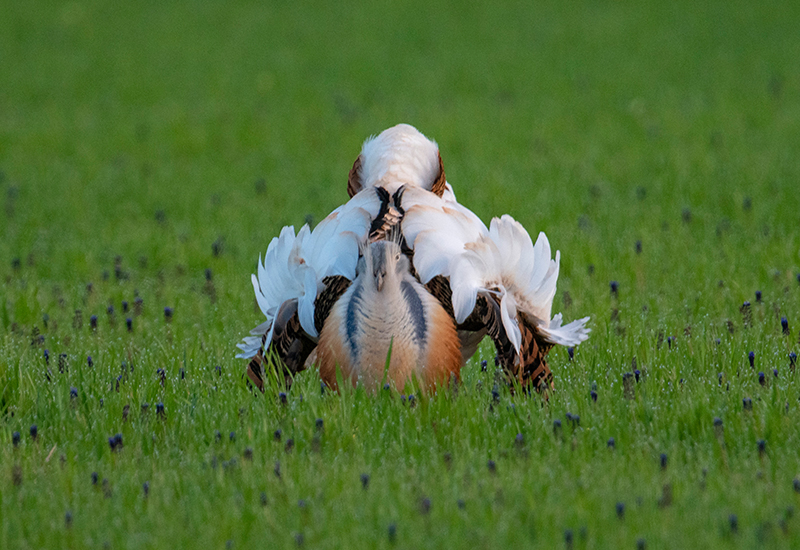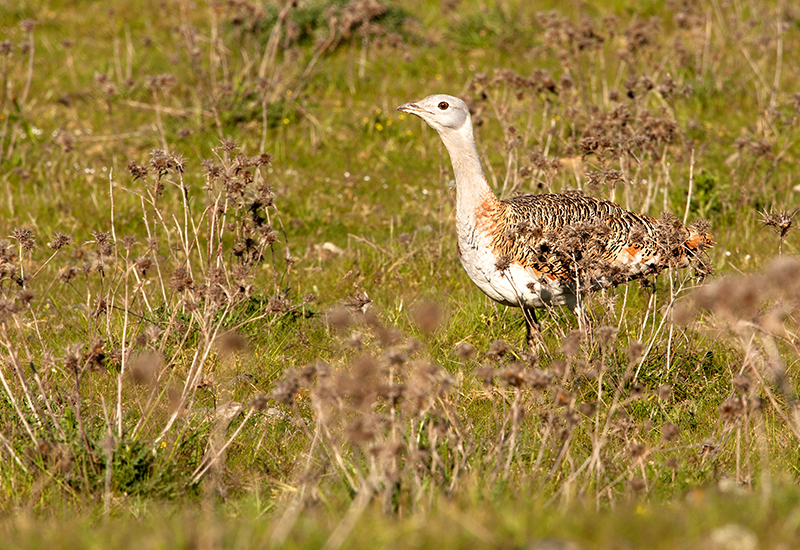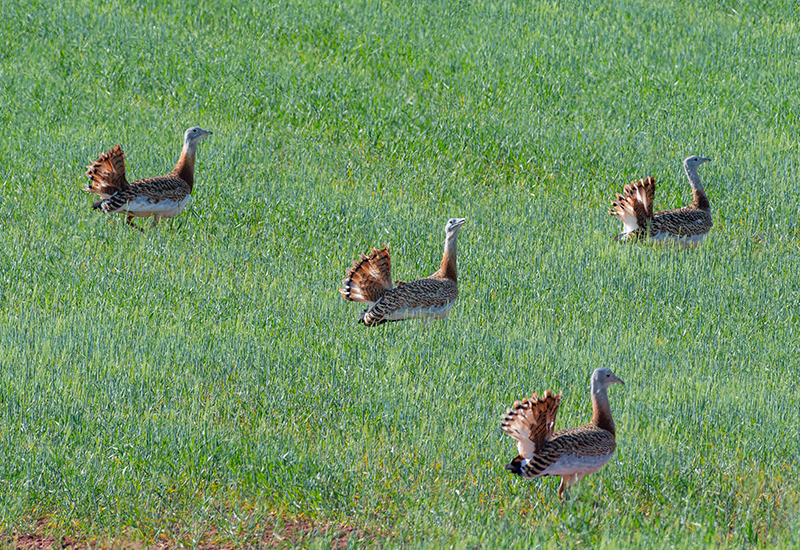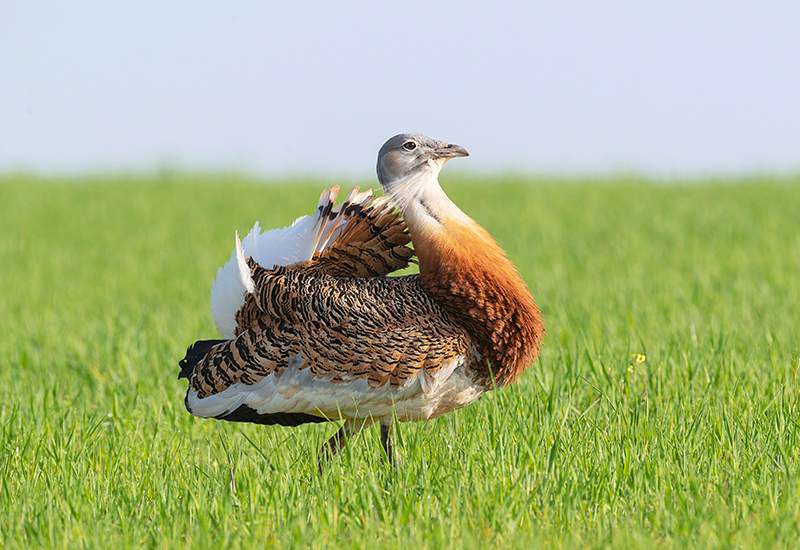For many parts of the northern hemisphere, February is a cold and wintery month. Not so much for the south of Portugal. The Algarve and Alentejo regions start to show true signs of spring. Woodlands and grasslands are green carpets patched with wildflowers. Swallows are already here, flying around and starting to rebuild their nests. Other animals start to prepare for mating season. Amongst these is the great bustard (Otis tarda), a magnificent bird who is responsible for one of the most impressive mating displays of the natural world.

Great bustards are spectacular birds for their regal appearance, impressive size and eccentric behaviour. A globally endangered species, this is a resident species in Portugal and Spain. The Iberian Peninsula is home to 75% of the world’s great bustard population that spreads across steppes and prairies from Portugal all the way to China’s Pacific coast. In Portugal, the quiet Alentejo planes provide an ideal habitat for this large bird that shies away from human activity.
Arguably the heaviest flying bird in the world, the species also shows exceptional sexual dimorphism, meaning that males look different from the opposite sex. Bigger and heavier males also grow long white whiskers, a bronze colour neck collar and brighter colours.

Adult males usually weigh up to 18 kg, but a record specimen found in Manchuria measured a whopping 21 kg on the scales and there have even been unconfirmed reports of heavier specimens. For comparison’s sake, these record holders weigh roughly the same as a fully grown British bulldog and still manage to fly! Unsurprisingly, when scared, they would rather run away on the ground than take off to the skies.
At this time of the year, birds gather in large unisex groups. Males gather together in rutting groups called leks and start to size up their competition.
Not far away, the group of females keep a watchful and interested eye. Females show little interest in males for much of the year and tend to spend most of the time in separate groups, raising chicks from previous years. Now, the fittest males and the best displays will be rewarded with mating rights that will guarantee the genetic lineage for the next generation of great bustards.
With all the parties present, males start to stand up to their rivals and lek activity increases. The magic starts when the males rush their necks and heads backwards and turn their white lower feathers upwards, turn their tail and wings inside out and inflate their necks. The result is an impressive foam bath effect that does not resemble a bird in any way. This feathered metamorphosis is irresistible for the spectating females who will eventually approach their chosen partner and dance together for some time before mating takes place.

Worldwide there are 26 species of bustards found in Europe, Asia, Africa and Oceania. The dispute for number one world’s heaviest bird is between the great bustard and its African cousin, the kori bustard (Ardeotis kori), with adult males weighing around the same in both species. The world’s smallest bustard is the little brown bustard (Eupodotis humilis) native to Ethiopia and Somalia. These only grow up to 40 cm in length and weigh less than one kilogram.
In England, great bustards have been used as symbols of elegance and greatness. Cambridgeshire and Wiltshire proudly bear great bustards in their coat-of-arms. Once distributed across the planes of southern England, great bustards were also hunted and featured in menus for important banquets. Hunting and agriculture development saw the extinction of this bird in the 19th century. The Wiltshire-based Great Bustard Group started a reintroduction project in 1998 and has since released over one hundred birds into the wild. This has resulted in a wild breeding population of great bustards in England, nearly two hundred years after its disappearance.
- Height: 1.10 metres
- Length: 1.15 metres
- Wingspan: 2.5 metres
- Weight: 18 kilogrammes
- Longevity: 20–25 years.
- Diet: Omnivorous. Will feed on a variety of grain, grass, flowers, insects, worms, and even small lizards and mice.
- Where to see: Castro Verde, Vidigueira, Mourão
- Fun fact: Their feet consist of three front-facing toes. They lack the opposable hind toe meaning they can run very fast (reaching 48 km/h) but cannot perch on anything.













